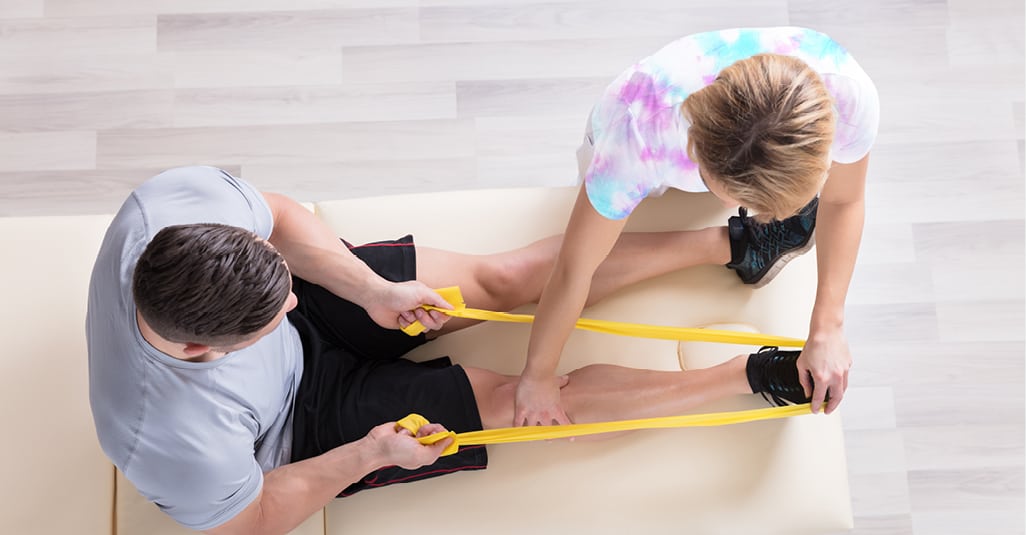
Perfecting the path
Access Rehab Centers, a physical, occupational, speech and aquatic therapy provider in Waterbury, Conn., made a powerful choice.
Patients who receive therapy services at one of the organization’s 13 clinics received a uniquely branded T-shirt at the end of their customer journeys. The organization found a way to turn that single customer journey touchpoint into more connections. And it all started with a little creativity and fun.

Hanes Authentic T-Shirt
“We wanted to give staff members a comfortable, creative option to wear in the office,” said Brian Emerick, president of Access Rehab Centers. “We gave the shirts and tie-dye kits to every clinic and asked them to get creative.”
For Access Rehab Centers, the t-shirts soon began to play a much bigger role in the overall patient experience. It’s an example of how any organization can create experiences that meet prospective customers’ needs before, during and after a sale. Here’s how you can do the same in your organization.
Step 1: Build a list of touchpoints
It’d be difficult to create a map of a country without a list of roads and cities and an understanding of where they connect. Likewise, customer touchpoint mapping requires knowing the places current and prospective customers interact with your organization.
Start building your customers’ journeys by capturing all the potential touchpoints before, during and after the sale. To ensure the list is complete, be sure to tap all departments for their ideas.

Touchpoints before the sale
Future customers can encounter your brand in a wide range of places. As you create your inventory, consider online and print ads, company events, word of mouth, product reviews and your website as places prospective customers may find information about you.
At this phase of the journey, prospective customers may want to know more about your organization, the products or services and what makes them different from competitors.
When Access Rehab Centers staff tie-dyed their T-shirts, they also submitted photos for a contest. Pictures were shared via social media and followers encouraged to vote for their favorites. Friends and family shared social media posts, adding to the fun, creating a customer journey touchpoint and introducing potential new patients to the therapy provider.
Touchpoints during the sale
As you continue cataloging the places where prospective customers interact, consider how your customers interact with you during the sale.
During this portion of the journey, prospective customers want to be assured their experience will be smooth and the product or service reliable. They may want answers to questions about timelines and customer support, should they need it. They’ll often use your website, physical location, delivery service and sales team to find information.
Access Rehab Centers continued to build the feeling of community and fun during this experience. The shirts made staff easy to identify and made them feel more accessible to patients. The T-shirts also create a conversation starter for patients starting therapy.
After the sale
What happens after a sale is often the deciding factor in whether a customer decides to choose your organization again. That’s why it’s important to map the touchpoints your organization has with customers after they’ve purchased a product or service. Among the touchpoints to consider:
- Thank-you notes
- Feedback surveys
- Invoices or bills
- Customer support calls, texts or emails
- Renewals
- Loyalty programs
- Training programs
When mapping these touchpoints, consider customer wants and needs after making a purchase. Can you reinforce their excitement about the purchase? Encourage them to provide feedback? Open clear channels for customer support? Take inventory of what exists and ask if these after-the-sale touchpoints complete the buyer experience.
To complete their patient journey, Access Rehab Centers ensures each patient takes a bit of the experience home with them.
“We give every discharged patient a shirt,” Emerick said.
In addition to feeling a part of the organization, patients also have the clinic’s name and contact information on their shirt.
Step 2: Craft your customer journey map
Once you have a collection of touchpoints that go from your first meeting to your post-sale return visit, build a map that allows you to see every step on the customer journey.
While this can be as simple as a list that goes from beginning to end, a spreadsheet or a whiteboard, mapping customer touchpoints lets you see all the different “roads” that exist. Use the map to identify gaps, basically places where prospects may not get the information they need or have the experience you want.

Step 3: Label touchpoint intensity
Every touchpoint is important, but some provide a little nudge while others create a big push. Labeling your touchpoints from 1 (least important) to 5 (most important) ensures you’re putting energy into the most critical touchpoints.
Step 4: Review feedback and improve the journey
Feedback comes in many forms, from online reviews to customer interactions to word-of-mouth recommendations. Cross-reference that feedback with your customer journey touchpoints map to determine where changes need to be made.
From start to finish and back again
For Access Rehab Centers, a T-shirt created both employee camaraderie and added consistency to touchpoints on the customer journey:
“Tie-dye is a much more involved process than most people realize, so this ended up being a fun way for staff members to spend their lunch hours,” Emerick said. “And it gave them a comfortable, fun way to wear an Access logo in the office.”
And as these shirts journey out into the world, they create a customer journey touchpoint in every potential patient they encounter.
Want to know more about this topic? Email [email protected] with inquiries.











